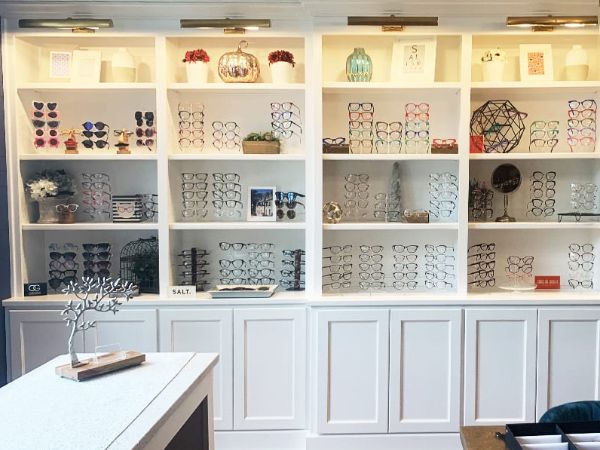GLAUCOMA TESTING & MANAGEMENT IN SALISBURY, NC
Preserve Your Vision From The Threat Of Glaucoma
Glaucoma is a very common eye disease that can develop without symptoms over the years. But as it develops, it slowly damages your optic nerve, eventually to a point where you experience irreversible vision loss. Glaucoma’s ability to do this has helped it earn the nickname “the silent thief of sight.”
But what can you do to catch The Thief before it damages your vision? Your first step is to book an appointment with us. We can help diagnose the existence of glaucoma and provide a strategy for you to preserve your vision!
What Is Glaucoma?
Glaucoma isn’t just one disease. It’s a group of diseases that typically occurs when your intraocular pressure (IOP) levels rise to an unstable point, damaging your optic nerve and causing vision loss.
In many cases, you may not experience any symptoms until your vision is already permanently damaged, but an eye exam can help catch these issues.
Risk Factors
Please be aware of these risk factors and how they could contribute to glaucoma development:
A family history of glaucoma
Extreme nearsightedness or farsightedness
Past eye injuries
Corticosteroid medication use
Medical conditions like heart disease, diabetes, or even high blood pressure
Over 60 years old
High IOP levels
Common Forms Of Glaucoma
There are 4 common types of glaucoma:
Open-Angle Glaucoma
Open-angle glaucoma occurs when the drainage angle between your iris and cornea remains open, but the fluids inside your eye (aqueous humor) can drain, possibly due to blockages in your anterior chamber. Slowly, your IOP levels rise, damaging your optic nerve and causing permanent vision loss.
Closed-Angle Glaucoma
Closed-angle, or acute angle-closure, glaucoma occurs when the drainage angle between your iris and cornea closes, leading to a rapid rise in IOP. When this happens, you experience a variety of symptoms, including:
Nausea
Eye pain
Headaches
Glare or halos
Blurry vision
Closed-angle glaucoma is considered a medical emergency and requires immediate attention.
Normal-Tension Glaucoma
Normal-tension glaucoma is unique because it develops without affecting your IOP levels. Optometrists aren’t exactly sure how this disease occurs, but it can be diagnosed by observing the optic nerve during a comprehensive eye exam.
Secondary Glaucoma
Secondary glaucoma can occur when outside factors influence the development of this disease. This can include eye injuries, medications, inflammation, or surgery. Symptoms are similar to open or closed-angle glaucoma, and can be diagnosed during an eye exam.
Diagnosing Glaucoma
Maestro Ocular Coherence Tomography & Retinal Imaging
Ocular coherence tomography (OCT) is widely used for generating cross-sectional images of your retina. What makes this device unique is that it creates its images from using technology similar to an ultrasound, but instead of sound it uses light.
Salisbury Eyecare & Eyewear is proud to use the Maestro OCT device, which also generates 2D and 3D images of the macula using state-of-the-art full-color fundus photography!
Ocular coherence tomography (OCT) provides us with the opportunity to get a detailed look into your retina in a comfortable, non-invasive way. OCT scans generate cross-sectional images of your retina using a technique similar to an ultrasound but with light instead of sound.
Our Maestro OCT device also comes with retinal imaging to produce full-color fundus photography in 2D and 3D images! This device is useful for diagnosing diseases like glaucoma, AMD, diabetic macular edema, and diabetic retinopathy.
ICare Tonometer
The iCare tonometer is a handheld device that can help measure your IOP levels in a safe, quick, and convenient way!
iCare tonometry is a handheld tonometer that uses a small probe to measure your IOP levels. iCare tonometry is quick, comfortable, and convenient for diagnosing symptoms of glaucoma.
Goldmann Applanation Tonometry
Goldmann applanation tonometry is held as the “gold standard” for measuring IOP levels and diagnosing glaucoma. This device uses a small probe that gently flattens the surface of your eye and measures your IOP levels by calculating the amount of resistance your eye produces against the pressure.
Tono-Pen
The Tono-Pen is a revolutionary step in the world of tonometry. This easy-to-use device helps us get accurate readings of your IOP levels by gently putting pressure on your cornea and measuring the pressure level inside the eye.










